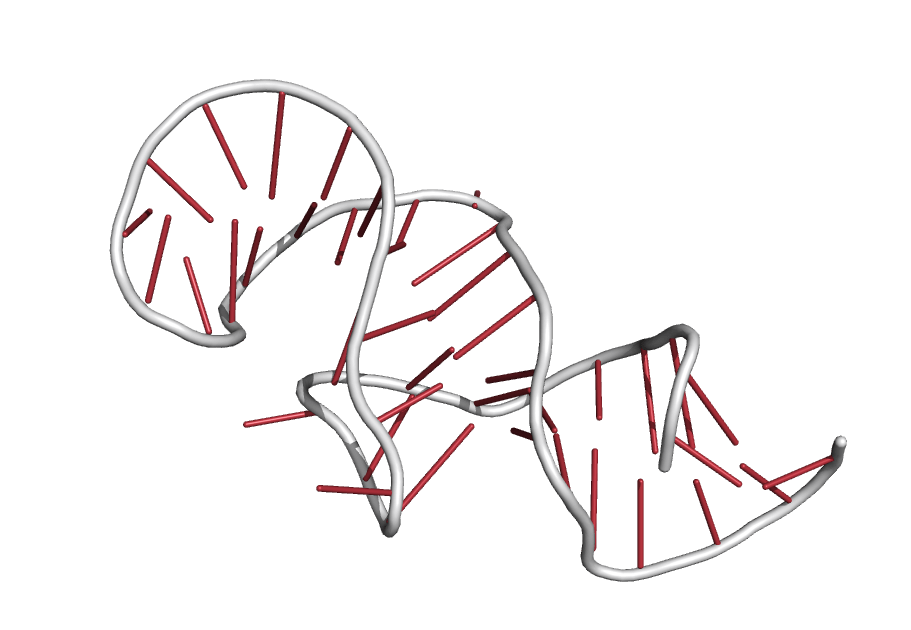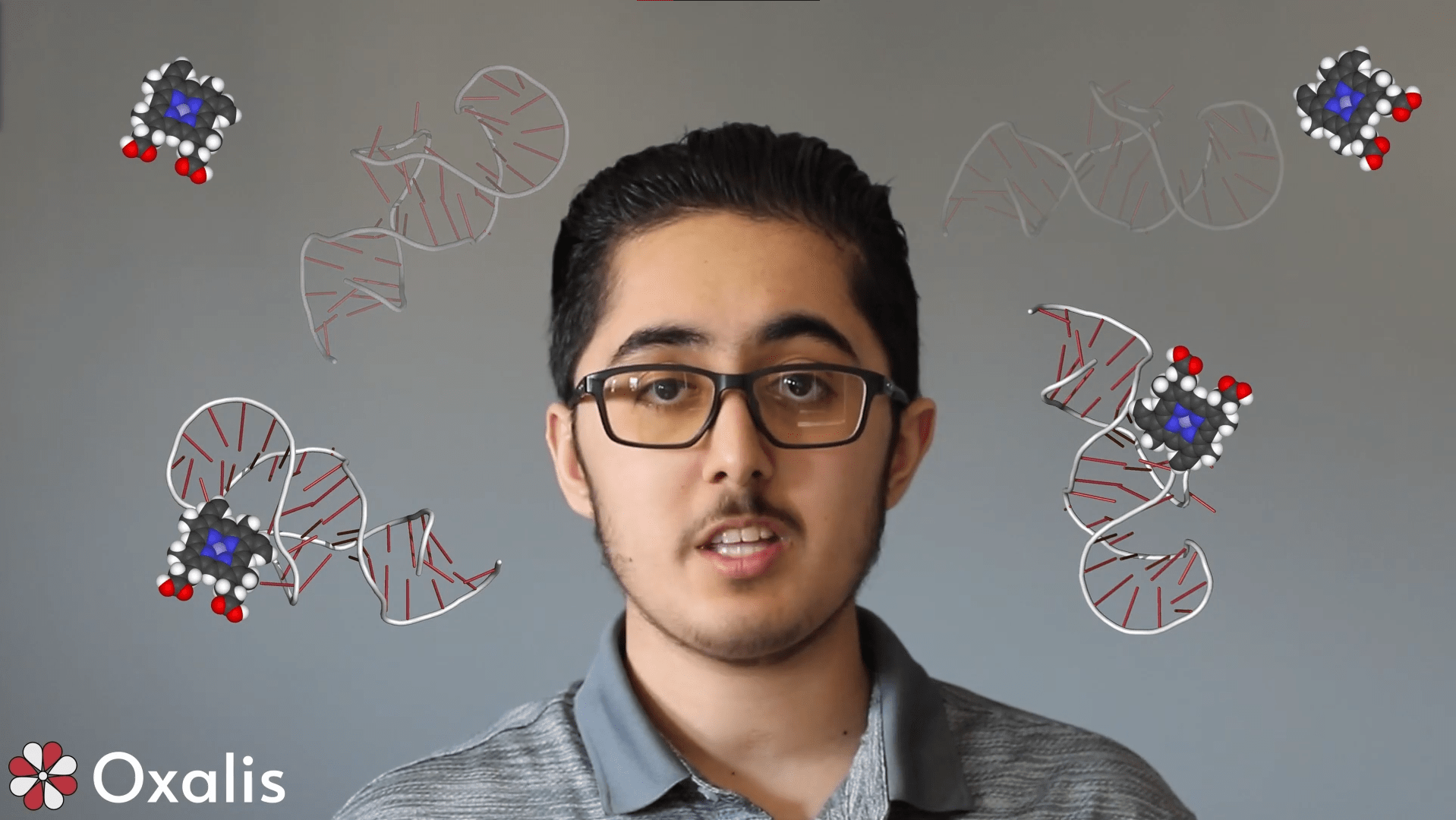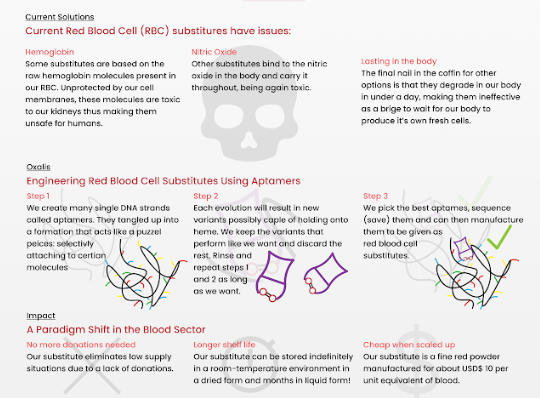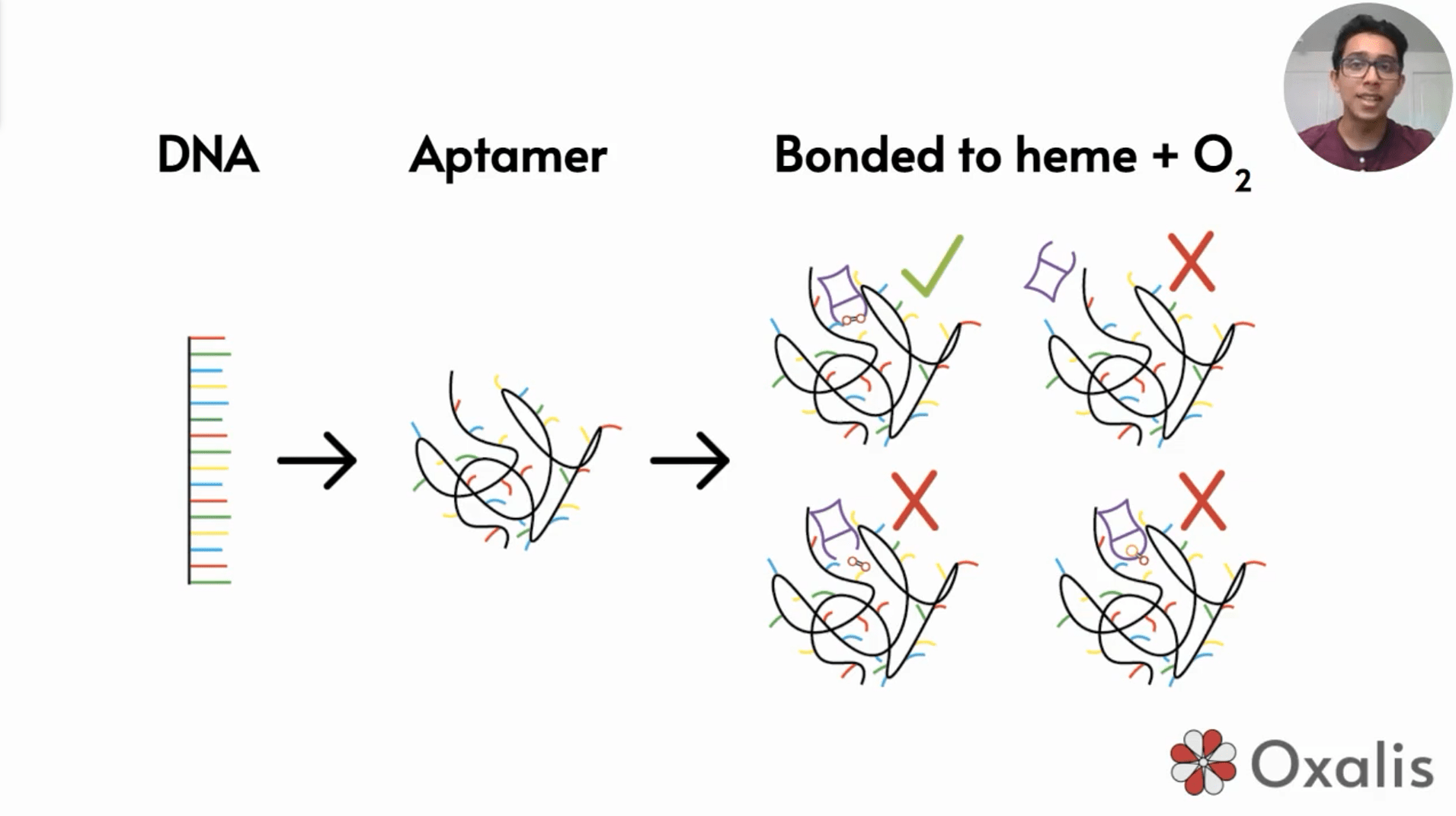Synthesizing Red Blood Cell Substitutes to Replace Human Blood Donors
Taking back control of the global blood supply with Aptamer-Based Oxygen Transporters.
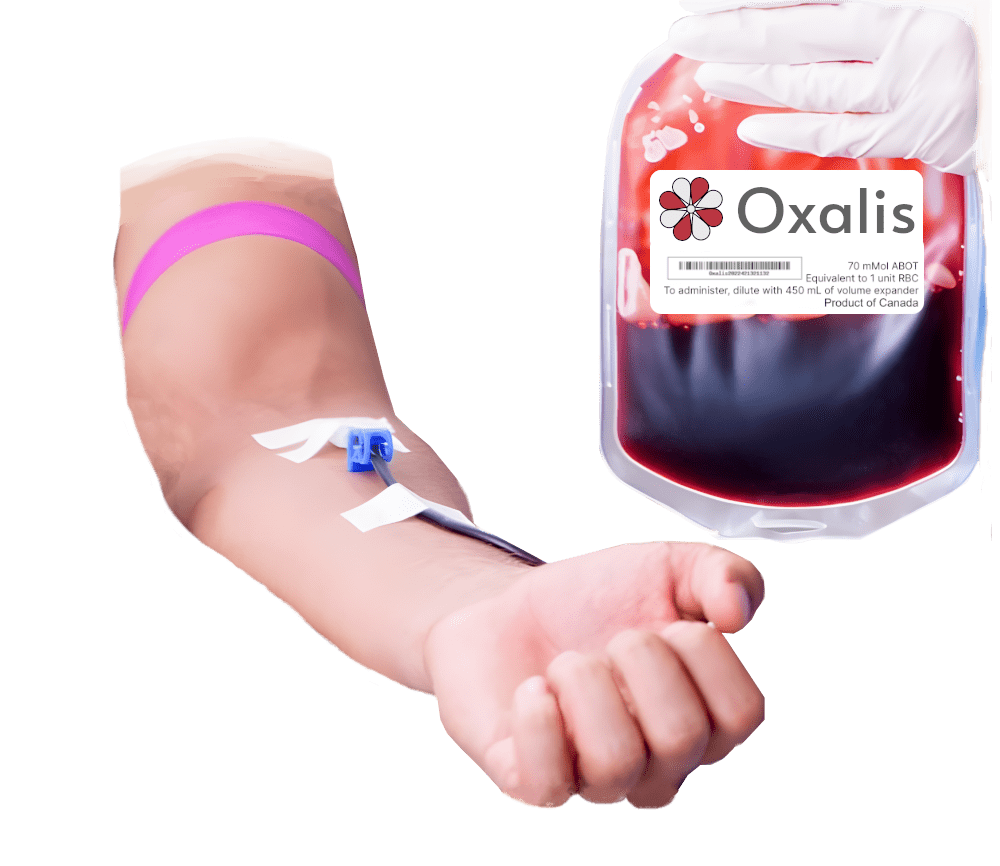
What's the problem?
The blood supply isn't reliable.

Low Eligibility
Only 50% of people in Canada are eligible to donate blood due to medications, cancer, infectious diseases or other health issues.

Even Fewer Donations
In Canada, only 1.23% of people actually donate blood. At any given time, there is less than a 5 days supply of blood.

Supplies are Low
Blood expires quickly, meaning stocks are temporary. In times of crisis like COVID-19, donations fall lower, putting lives at risk.
Our Solution: Aptamer-Based Oxygen Transporters
Synthesizing red blood cell replacements with aptamer controlled heme.
We invented a new approach to oxygen transport in the blood: using aptamers to manipulate the properties of the heme.
Aptamers are tangles of DNA that can stick to stuff, here they'll stick to heme, the oxygen-transporting part of your Red Blood Cells (RBC). Evolution is really good at designing all the parts that make up living things. We're going to mimic this using a technique called SELEX to evolve aptamers that are really good at carrying oxygen.
Learn MoreEvolve the Aptamer
To be able to take advantage of the oxygen-carrying potential of the heme in our blood, we evolve the aptamers over multiple generations to attach to the heme in a way that favours oxygen transport and dissuades interaction with dangerous chemicals like nitric oxide.
Modify the aptamer
Next, we need to make sure the aptamer can survive in the body. We start by converting the bases into a different type of DNA called a locked nucleic acid (LNA), protecting the bases from degradation. We also PEGylate the LNA, protecting it from kidney filtration.
Manufacture Product
Once we've finished the evolution of the aptamer once, we can sequence its DNA so we can duplicate it for the future. We can then manufacture the final aptamers and heme to distribute them to customers.
What's so great about Oxalis ABOT?
Oxalis is a paradigm shift when it comes to red blood cells.
Synthesizable!
The ability to manufacture RBCs means the days of low supply and fear are gone.
Better Storage
Due to its DNA base, Oxalis ABOT can be freeze-dried and stored at room temperatures forever, letting us build up stock, unlike normal blood.
Less Expensive
Depending on scalability, Oxalis has the potential to be 3x cheaper than human red blood cells.
Safer and More Resistant
Compared to other RBC substitutes, ABOT lasts 10-100x longer in the body. The technology also allows us to address any safety concerns easily.
With all these benefits, Oxalis ABOT has many potential applications.
Content
Check out some of the content we've made about Oxalis.
Quotes
People are interested in Oxalis.
Meet the Team
Those behind the change
FAQ
New tech means new questions, and we've got answers.
This FAQ is made to answer questions about technical aspects, address concerns about safety, and share our plans for implementation.
All FAQsYes! We've done a lot of research on all the roles of current red blood cells and have designed ABOT to complete all of them. With the aptamer technology being used, we can constantly take feedback and results from trials and tests to improve the product so that when it goes to market, it's 100% safe!
Depending on the scalability of the synthesis process, the price can be a worst-case of around $200 per pint (about the same as the price of current RBC) and a best case of being under $100, saving the healthcare sector millions each year.
We do not plan on selling directly to patients. Instead, we will partner with blood authorities like Blood Services Canada and hospitals to supply directly to them.
Oxalis ABOT can actually be stored indefinitely in a dried form which can be later rehydrated and diluted for infusion. This mitigates two of the biggest disadvantages of current blood, which are being perishable and needing very controlled conditions (no more than a total of 10 minutes >0C).
